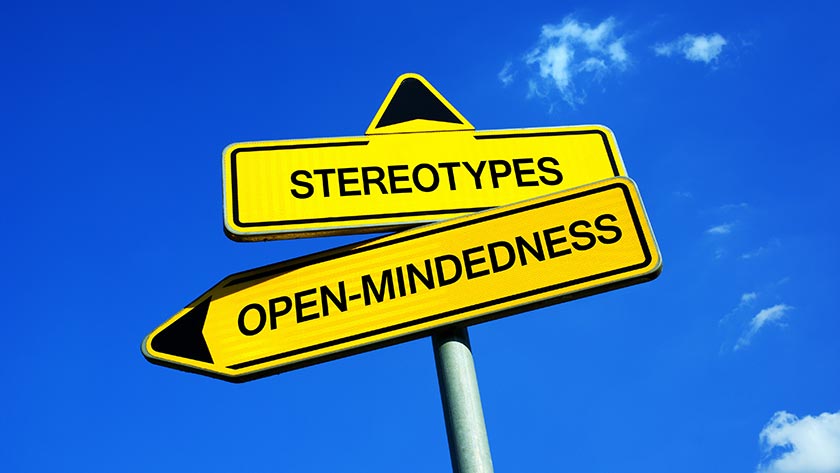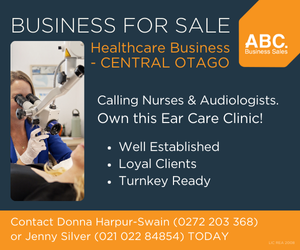Bias, unconscious bias, systemic bias and institutional racism all affect our ability to create a health environment that addresses inequities in health. But what are these things and how do they prevent us from making objective decisions?
Bias, commonly unconscious or implicit, occurs automatically as the brain makes rapid judgments about people and situations based on the person’s own background, experiences and environment.1 Unconscious bias has been recognised in cognitive science and social psychology for many years and reflects deeply held stereotypes associated with different social categories (such as age, gender, ethnicity, socio-economic status or religion).2, 3 Our perceptions cause responses that we are consciously unaware of. As a result, we are likely to favour groups we perceive as similar to our own group and display discrimination against groups that are dissimilar, without being aware of it.4 Whether we like it or not, we tend to like people who look like us, think like us and come from backgrounds like our own.
Brain filters information
When we make implicit associations, it is often the more primitive parts of our brain that are activated.5 Our brains constantly filter huge amounts of information, prioritising, categorising and summarising our surroundings. While this served us well hundreds of thousands of years ago when our daily choices were frequently life or death decisions, today our unconscious biases can lead us astray. Unconscious biases can prevent individuals from making objective decisions and cause us to miss good ideas, ignore an individual’s potential, and create a less than ideal work experience for colleagues.5 They can also create problems in health, directly resulting in systemic bias and institutional racism which in turn cause health-care disparities and inequitable outcomes.3, 4, 6, 7
Unconscious biases can prevent individuals from making objective decisions and cause us to miss good ideas (and) ignore an individual’s potential…
Systemic bias has been present in our health system since we had one. It persists today, due to unconscious bias. In health, when our institutions create barriers to health care for a certain group or groups, this is systemic bias and ultimately creates inequities in health outcomes for that group. It is important to remember that institutions are held together by policies written by people who originally held conscious biases and now hold innate unconscious biases, creating organisational structures that perpetuate systemic bias and racism. This is manifest in a multitude of ways, not least in the unequal health outcomes we see between Māori and non-Māori in Aotearoa.
Impact on Māori
There are a number of clear examples of the impact of unconscious and systemic bias on Māori over many years: Māori men are less likely to receive medical intervention for cardiac disease than non-Māori men;8 Māori women are less likely to receive epidural pain relief during child birth than non-Māori women;9 Māori have a significantly poorer bowel cancer survival rate than non-Māori;10 Pākehā doctors spent 17 per cent less time interviewing Māori than patients from other ethnic groups;11 Māori are less likely to receive sudden unexplained infant death (SUDI) prevention information from their Well Child health provider than other ethnic groups;12 and systemic bias is present in the holding, monitoring and funding of contracts for Māori public health providers.13
If we look beyond New Zealand, there are further examples of the impact of unconscious bias on health outcomes. A systematic review of implicit bias in health-care professionals found evidence of unconscious or implicit bias in 35 of 42 articles, and all of the studies that investigated correlations found a significant positive relationship between level of implicit bias and lower quality care.3
Simple steps
The news is not all bad though. Google found that staff who undertook unconscious bias training were more aware of the impact of bias, both immediately after and a month after training, compared to those who had no training. And in the first instance, there are even some simple steps we can take individually to address our own biases.
Acknowledging that unconscious bias exists is an important first step to overcoming it. Nobody wants to believe they are part of the problem. Kate Wilkinson and Anna Kirkwood, who run workplace diversity workshops in New Zealand, provide a useful staged approach to addressing unconscious bias.14 This approach requires you to recognise stereotypical thoughts as they occur, and discount them. Instead of relying on assumptions, you train yourself to focus on the individual as your primary source of information.
Wilkinson and Kirkwood apply their staged approach to a scenario: You’re sitting in the hospital waiting room, waiting for the doctor. A women in scrubs walks in and a voice in your head pipes up with a “harmless” thought… “oh, here’s the nurse”; that’s Stage 1 – the thought. At pretty much the same moment, you voice your thought to your partner sitting next to you; that’s Stage 2 – the statement. It turns out she is actually the doctor, but because of your initial assumption, you can’t help but take her advice a little less seriously and are more inclined to seek a second opinion; and that’s Stage 3 – the action. We can run a similar scenario with nurse practitioners vs doctors, Māori vs non-Māori, black vs white, hijab-wearing Muslim vs non hijab-wearing Muslim, tattoos vs no tattoos, short skirt vs trousers, young vs old, obese vs non-obese; gay vs straight; the list goes on.
…systemic bias is present in the holding, monitoring and funding of contracts for Māori public health providers.
The end goal is stopping at stage 1. When that initial thought comes into your head, the trick is to leave it there. Wilkinson and Kirkwood give us some sage advice: don’t voice the thought, accept it, sit with it for a moment, then promptly discard it into the gutter.14 Overcoming unconscious bias isn’t easy. It’s a lifelong process that requires time and attention. It is almost impossible to rewire your brain so that the thoughts never come into your head again – remember we are fighting thousands of years of neuro-programming here.
Some more tips from Wilkinson and Kirkwood to stop at Stage one: firstly, watch your language; avoid using ableist, homophobic, gendered, racist or ageist words. When we can monitor our own language, stopping at Stage 1 will start to come naturally. Secondly, wait for the slow brain; try to lengthen the time between Stage 1 (thinking) and Stage 2 (saying) the thought. The extra split second will give you time to use your logical slow brain to analyse your thought, check whether it is biased and then decide whether to move forward to Stage 2. Thirdly, get to know different people; people close to us are most often the same as us – try expanding your friend circle beyond what and who you know.14
There are a plethora of opportunities to address unconscious and systemic bias in ourselves and in our workplaces. As nurses, we need to firstly work on ourselves and ensure we understand and recognise our own biases. From here we can lead by example and create inclusive workplaces that are safe for people from all walks of life. Concurrently we can support our own organisations to take steps to identify bias within our health care provision, whether this is systemic or individually driven.
This is powerful stuff and if we get it right, the benefits are immense. Not only will we have a staff that are diverse and happy in their work, we will have created an environment in which all people can rightfully feel they belong and will get the health care they need.
Jill Clendon, RN, PhD, is the associate director of nursing and operations manager for ambulatory care at the Nelson Marlborough District Health Board. She is also an adjunct professor and teaching fellow at Victoria University of Wellington.
References
- Levy, B. (2010). Eradication of ageism requires addressing the enemy within. The Gerontologist, 41, 578-579.
- Mahzarin, R., Banaji, A., & Greenwald, G. (2013). Blindspot: hidden biases of good people. New York: Delacorte Press.
- Fitzgerald, C., & Hurst, S. (2017). Implicit bias in healthcare professionals: a systematic review. BMC Medical Ethics, 18(19). doi:10.1186/s12910-017-0179-8
- Houkamau, C., & Clarke, K. (2016). Why are those most in need of Sudden Unexplained Infant Death (SUDI) prevention information the least likely to receive it? A comment on unconscious bias and Māori health. New Zealand Medical Journal, 129(1440), 114-119.
- Raza, F. (2016). Mitigating unconscious bias, the hidden enemy. Human Resources, Summer 2016.
- Marcelin, J., Siraj, D., Victor, R., Kotadia, S., & Maldonado, Y. (2019). The impact of unconscious bias in healthcare: How to recognise and mitigate it. The Journal of Infectious Diseases, 220(suppl 2), S62-S73.
- Edlund, B. (2016). Unconscious bias. Journal of Gerontological Nursing, 42(5), 3-4.
- Westbrooke, I., Baxter, J., & Hogan, J. (2001). Are Māori under-served for cardiac interventions? New Zealand Medical Journal, 114(1143), 484-487.
- Ministry of Health. (2004). Report on maternity, 2002. Wellington: Author.
- Hill, S., Sarfati, D., Blakely, T., Robson, B., Purdie, G., Dennett, E., Cormack, D., Dew, K., Ayanian, J. Z., & Kawachi, I. (2010). Ethnicity and management of colon cancer in New Zealand: Do indigenous patients get a worse deal? Cancer, 116(13), 3205–14.
- Jansen, P., & Jansen, D. (2013). Māori and health. In I. St George (Ed), Cole’s medical practice in New Zealand (12th ed., pp. 52-65). Wellington: Medical Council of New Zealand.
- Ministry of Health. (2015). Well Child/Tamariki Ora Programme Delivery Reports for 2014. (Unpublished report.) Wellington: Author.
- Came, H., Doole, C, McKenna, B., & McCreanor, T (2017). Institutional racism in public health contracting: Findings of a nationwide survey from New Zealand. Social Science & Medicine, 199, 132-139.
- Wilkinson, K., & Kirkwood, A. (2018). Unconscious Bias: Getting Rid of That Pesky Judgemental Voice in Your Head. Human Resources, 23(1), 20-21.




